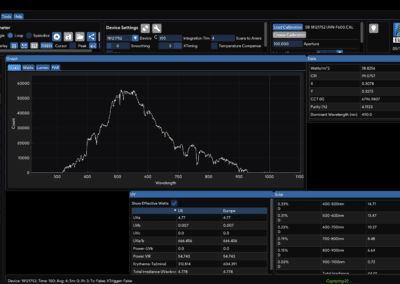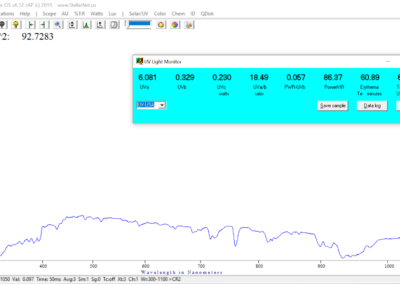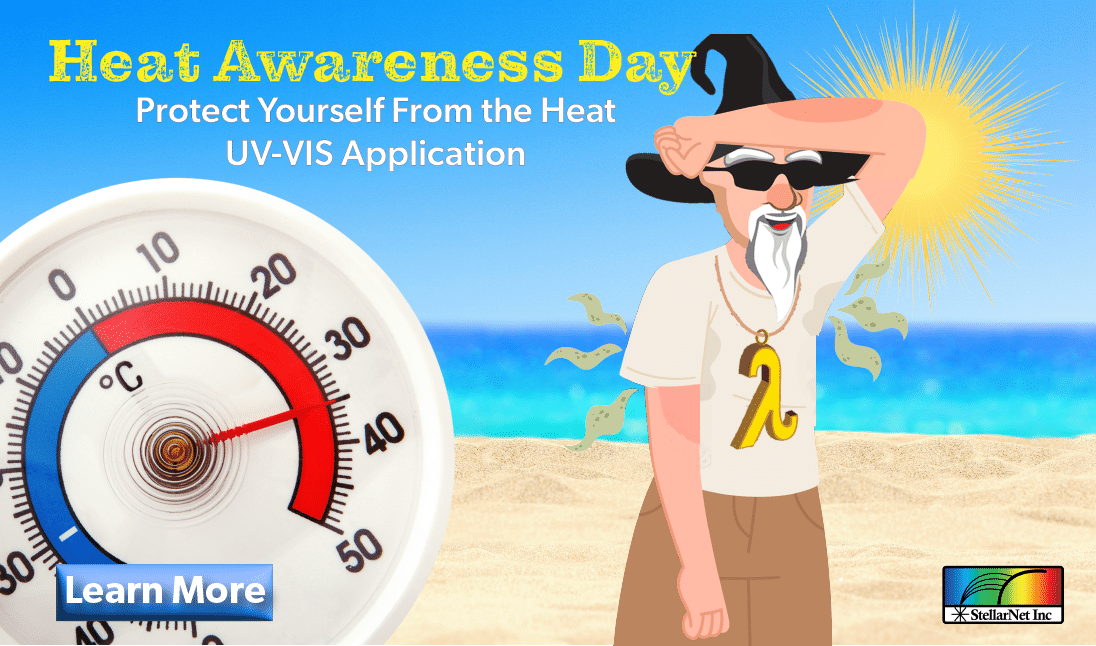
It’s almost summer and temperatures have been rising! Heat Awareness Day is observed on the last Friday in May each year to raise awareness about the dangers of heat and how to stay safe in hot weather conditions. There are many ways to protect yourself from the heat – just remember H.E.A.T: Hydrate, Educate (stay aware of current forecasts), Act quickly, and Take it easy. Another aspect of heat safety is sun safety. How is spectroscopy used in sun safety? Read on to find out!
Dangers of High UV-Index
While watching your morning news report, you’ll likely hear meteorologists talk about the UV Index. What exactly is the UV Index and how is it calculated?
According to the EPA, the UV index is “a forecast of the expected risk of overexposure to UV radiation from the sun.” The sun emits radiation across a broad spectrum – from short UV light to visible light that humans can see, all the way to near and infrared that we can feel as heat.
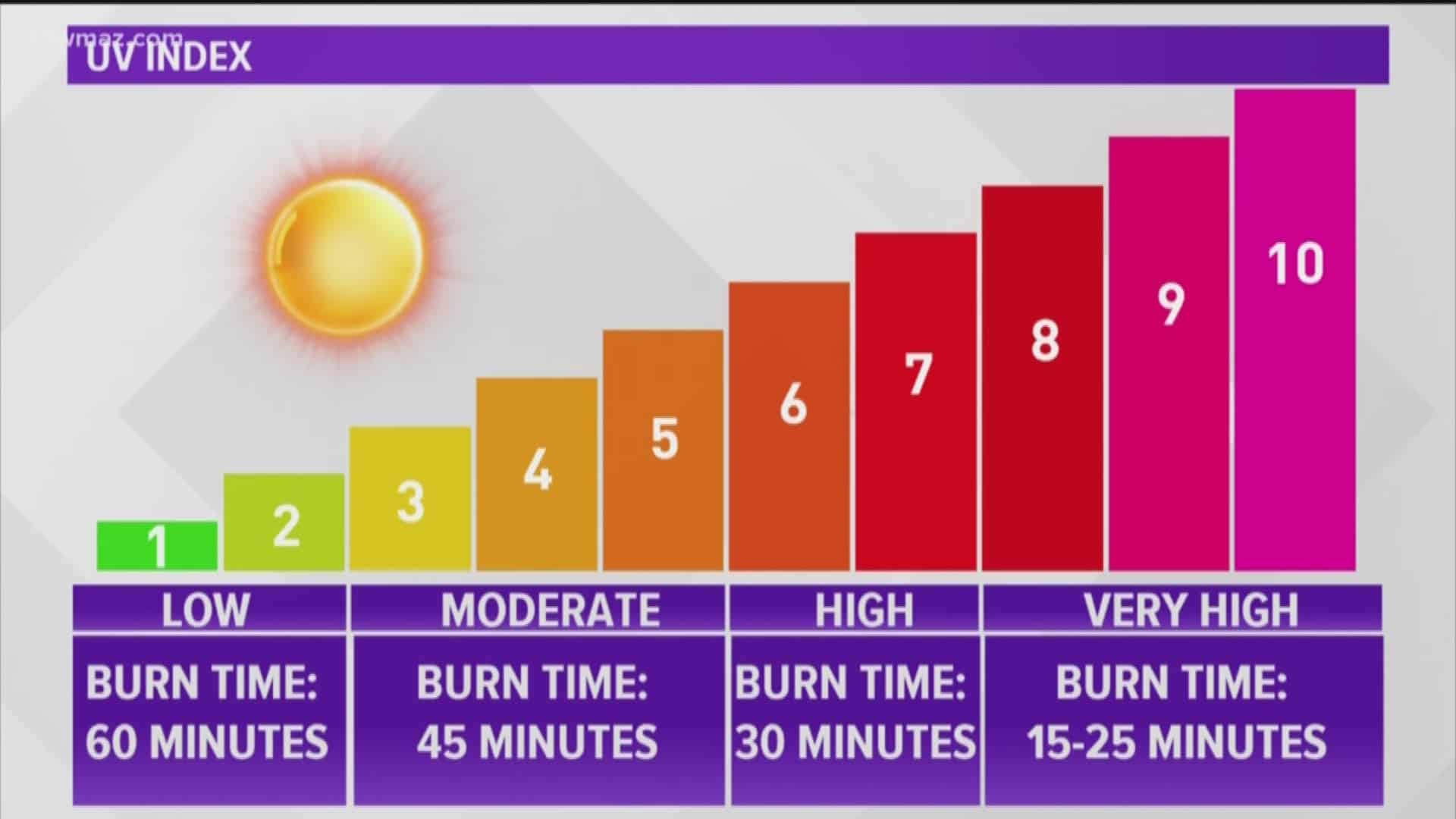
UV Light is separated into three bands – UVA (320-400nm), UVB(290-320nm), and UVC(100-290nm). While there are some benefits to UV light exposure (UVB light is biologically active – helping humans generate vitamin D which boosts your immune system and helps stimulate bone growth), there are many ways that repeated high UV exposure can do more harm than good. Skin cancer, premature skin aging, sunburn, and immune system suppression. The UV Index is a way of helping society avoid harmful exposure to UV radiation.
The U.S. National Weather Service calculates the UV Index by measuring the UV irradiance at ground level and uses computer modeling to relate it to ozone concentration, forecasted cloud cover, and elevation. The ozone layer absorbs different levels of UV radiation depending on the time of year and location. The ozone layer is naturally thinner in tropical latitudes, but at higher latitudes, the ozone layer is thicker which means that UV radiation must travel further to reach the Earth’s surface. You can think of the ozone layer as a layer of sunscreen for the Earth! The BLACK-Comet paired with a cosine receptor and UV-VIS irradiance calibration is a great tool to measure UV irradiance. The unique design of the optical bench provides increased sensitivity in the UV and NIR, uniform resolution across the entire range, and less stray light. Read more about concave gratings here!
Another part of the calculation of the UV Index adjusts for the sensitivity of human skin to UV radiation. In general, the shorter the wavelength the higher the energy per photon, and in regards to UV light, this means the lower the wavelength the higher the damage to human skin. Because of this, the irradiance of UV light is weighted at different wavelengths according to the McKinlay-Diffey erythema action spectrum. The UV Index also adjusts for elevation and cloud cover.
SpectraWiz has built-in functionality for UV radiation measurements. You can display in units of Watts for UVA, UVB, and UVC, or calculate the Te or time to erythema (reddening of the skin).
UV-Vis Transmission of Sunscreen
How can you protect yourself from harmful UV rays? Sunscreen!
It may be overwhelming to stand in the sun care aisle and see the different options. There are two main types of sunscreen – mineral and chemical – and each works differently.
Mineral sunscreens use zinc oxide and titanium dioxide as a physical barrier. Chemical sunscreens absorb into the skin and absorb the UV wavelengths (which is why it is important to apply before sun exposure). Chemical sunscreens typically use avobenzone and oxybenzone to prevent sunburn.
The active ingredients in mineral sunscreen help reflect the UV light away from your skin – you can easily see this when you take a flash photo of someone who has mineral sunscreen on.

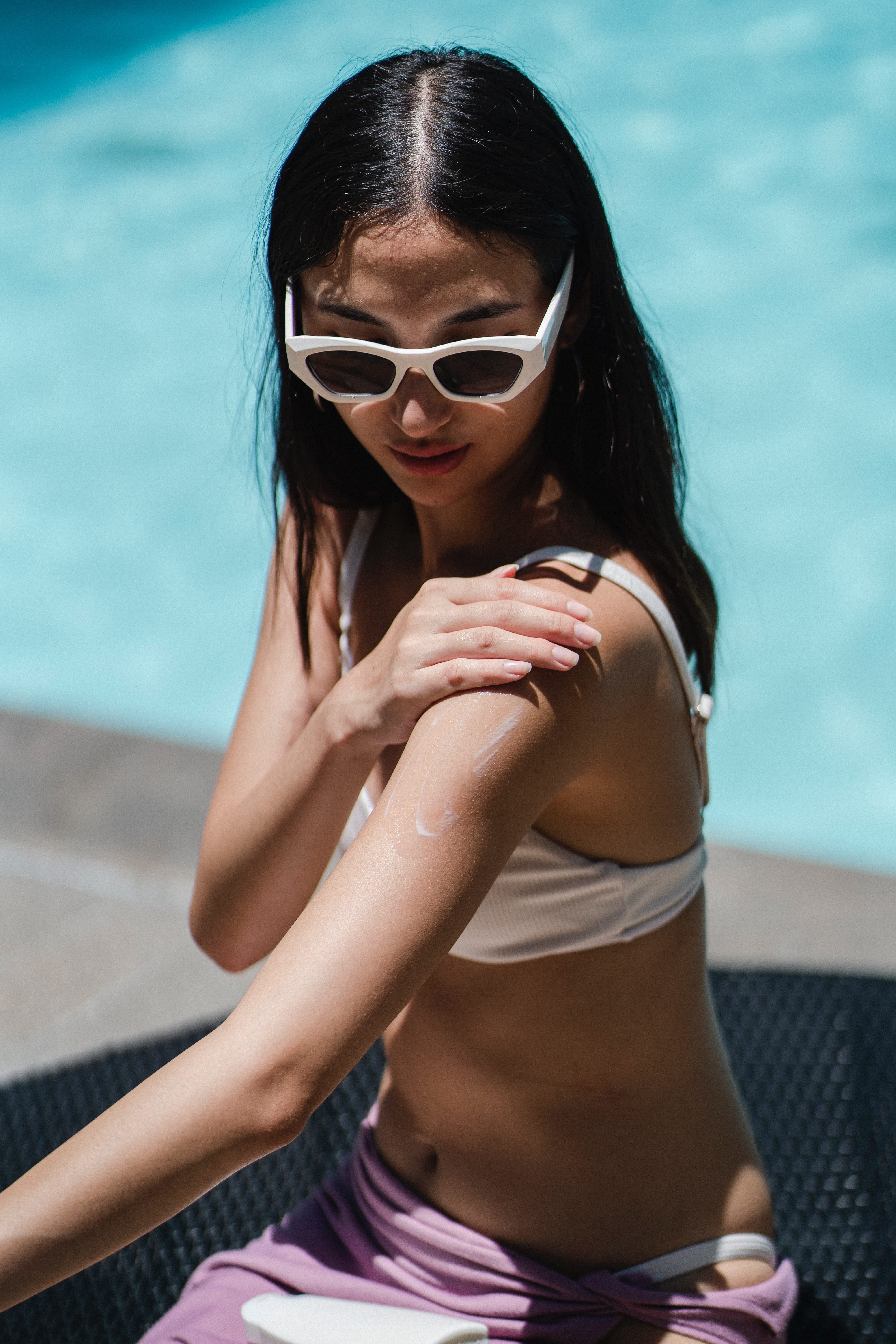
To the left, we can see the visible difference between mineral and chemical sunscreens. Mineral sunscreens leave a ‘white cast’ and are also known as physical sunscreens. To combat the white cast left by mineral sunscreens, many manufacturers add a tint to the formula.
Chemical sunscreens absorb UV light and prevent damage through a chemical reaction. Is there a way for us to test how much UV light is transmitted through chemical sunscreen? Of course, there is with UV-VIS spectroscopy!
A single application of each sunscreen was rubbed onto a piece of surgical tape and allowed to dry for 30 minutes. The transmission spectra of the tape was measured using a BLACK-Comet UV-VIS spectrometer. Transmission measurements were conducted using a transmission fixture that was connected by fiber optic cable to an SL3 deuterium light source.
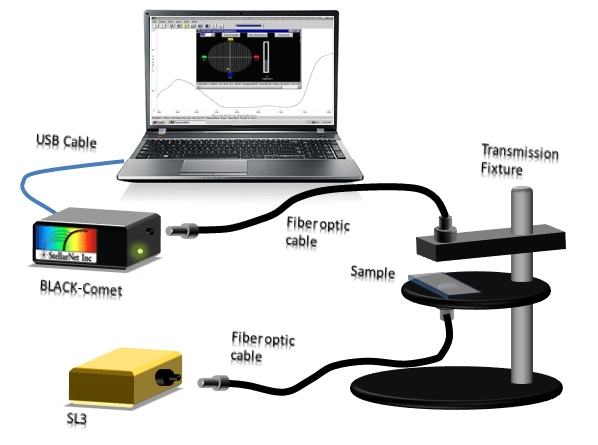
Sunscreen Transmission Results
The transmission spectrum across the UV & visible range was collected for each of the sunscreens tested.

If needed, we could have taken this experiment further to calculate the SPF value of these sunscreens. SPF or Sun Protection Factor is the rating used to specify how effective the sunscreen is at protecting your skin from the sun. The SPF rating is directly related to the UV absorbance.
Wanna talk more about spectroscopy? Need Floridian advice on staying cool in the summer? Reach out to your Application Scientist or ContactUs@stellarnet.us today!

